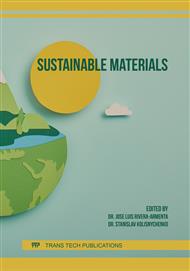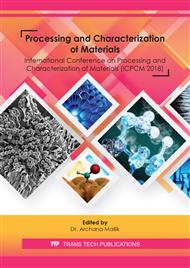p.202
p.209
p.216
p.222
p.229
p.237
p.245
p.250
p.257
A Study on Acoustic Property of Composites from Waste Tyres
Abstract:
The basic aim in using the waste is to reduce the level of pollution that harms the environment. However a proper approach to manage waste or reduce the level of waste helps in conservation of resources for the succeeding generation and contributes to a healthy, clean and pollution free environment. In recent years, control on two major ecological issues such as waste disposal and noise pollution can help in achieving a green and healthier environment. For disposal, waste tires are normally burnt. Extinguishing fire from tire is very difficult. The fire develops a thick, dark smoke which contains CO2, SO2, cyanide, and products of butadiene & styrene. This study focuses on the fabrication of composites from epoxy-waste tire crumb by hand lay-up method and the investigation of its acoustical property by Impedance tube method using LABVIEW. In the present work three different materials such as PVC, Stainless Steel and Glass has been used to prepare impedance tube as per ASTM standards. All the sound testing has carried out at a frequency range of 500 Hz to 5000 Hz. This study clearly shows a promising waste management for tyres by developing a cost effective composite and thus contributing to a sustainable waste granule (waste tyre) reinforced polymer composite industry.
Info:
Periodical:
Pages:
229-236
Citation:
Online since:
February 2020
Keywords:
Price:
Сopyright:
© 2020 Trans Tech Publications Ltd. All Rights Reserved
Share:
Citation:



